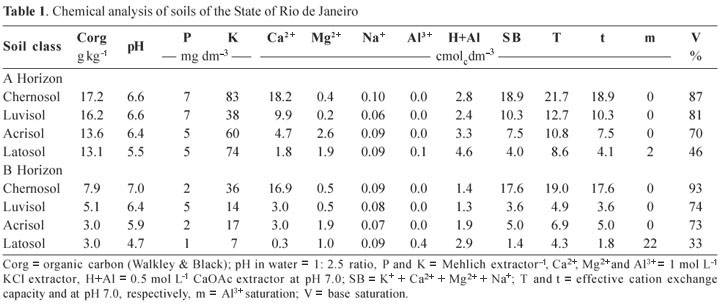Humic substances isolated from soil organic matter had been used as stimulators of plant metabolism. Arabidopsis thaliana (L.) Heynh. with only five chromosomes, short cycle and size, is an important model to evaluate the physiological effects of these substances, which are qualitatively and quantitatively influenced by morphogenesis, mineralogy and chemistry of soils. The objective of this study was to evaluate the ambience effects on bioactivity of humic acids. A and B horizons of four typical soils of the North Fluminense were sampled. After isolation and purification, humic acids were applied to plants in increasing concentrations. The number and length of lateral roots and main root length were evaluated and, subsequently, the concentrations of maximum stimulation were determined by dose-response curves and regression equations. The results showed that more stable humic acids isolated from soil in less advanced stages of weathering, high activity clay and high base saturation resulted in better physiological stimulants for Arabidopsis.
Soil genesis; chemistry and fertility; humic substances; bioactivity; Arabidopsis thaliana; Gênse; química e fertilidade do solo; substâncias húmicas; bioatividade; Arabidopsis thaliana





